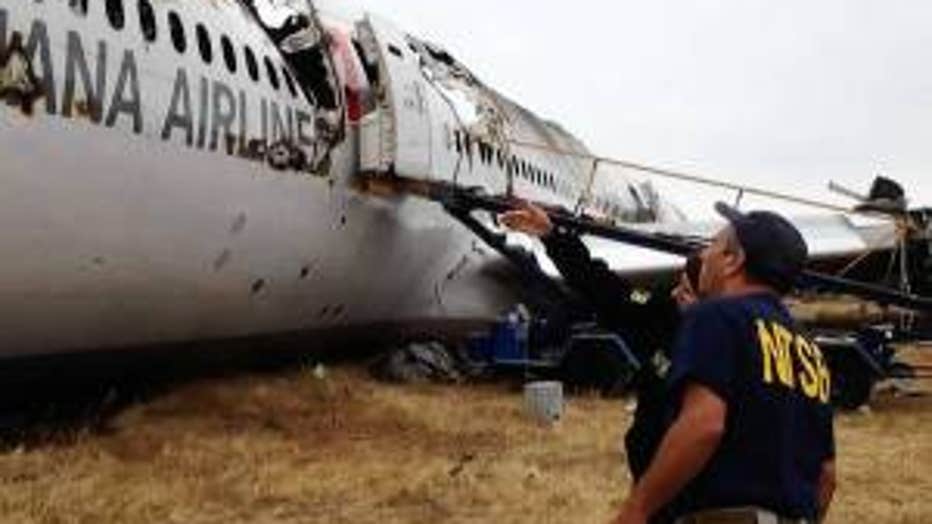Asiana Airlines pilots say auto-throttle didn't maintain landing speed
SAN FRANCISCO — The pilots flying the Asiana Airlines jetliner that crashed in San Francisco told federal investigators that an automatic throttle — a system akin to a car's cruise control — had failed to keep the jetliner at the proper speed for landing.
The Asiana pilots said in interviews with the National Transportation Safety Board that they had set the auto-throttles to maintain an air speed of 137 knots. That's a significantly faster speed than the plane actually achieved as it came in for its landing at San Francisco International Airport on Saturday.
As the inquiry entered its fourth day, Deborah A.P. Hersman, chairwoman of the National Transportation Safety Board, said investigators were still trying to verify whether the throttles were properly activated.
The pilots' statements do not resolve the central question of why the Boeing 777's speed and altitude fell so far out of the normal range for landing at SFO before it hit a sea wall and crash-landed. But outside air safety experts said the statements suggest a risky reliance on technology when the flight crew should have been constantly monitoring the airplane's speed.

NTSB investigator Bill English and agency Chairwoman Deborah A.P. Hersman examine the wreckage of the Asiana Airlines jet that crashed Saturday in San Francisco. (National Transportation Safety Board / EPA / July 9, 2013)
"Whether it was engaged or not working is almost irrelevant," said Barry Schiff, a former TWA pilot and an air safety consultant. "The big mystery of Flight 214 is why in God's name did these two pilots sit there and allow the air speed to get so low."
Experts said the pilots should have been monitoring the plane's speed every few seconds, and could have manually taken control of the engines at any time.
Auto-throttles, which are connected to an airplane's flight management computers, allow pilots to select the appropriate speed for takeoff, cruising or landing. The devices automatically make corrections if there are deviations from the setting.
Jon Russell, a veteran airline pilot and safety official for the Air Line Pilots Assn. on the West Coast, said the auto-throttle is a valuable tool.
"I don't know what happened. It just doesn't make sense," said Russell, noting that the pilots were very experienced in Boeing aircraft. "The situation deteriorated a lot farther than it should have."
Much of the information released by the NTSB since Saturday morning's crash has focused on the pilots, who were flying too low and slow during their final approach. Two people were killed and 182 were injured as the plane's landing gear and tail struck a seawall at the end of Runway 28L.
For more on this LA Times story, click here.

